In a world where taking risks can spark revolution, the e-bike market desperately needs a shake-up. Too often, manufacturers churn out carbon-copy designs, chasing trends and recycling the same bulky, heavy aesthetics seemingly dominating the e-bike landscape.
You’ve heard the complaints: “e-bikes are too big and heavy,” or, for the cycling purists, equipped with throttles and frame geometry that only re-enforces sitting back and throttling around town. But what about the love of pedaling? Can you love to pedal and have an e-bike that compliments that?
The question is: Can you have your e-bike cake and eat it too?
But what if a company dared to rewrite the script? When you stop following the crowd and reimagine what an e-bike can be when you stop following and start leading.
Enter Fiido, a brand bold enough to challenge convention with the Fiido Air—a featherlight, 30.3 lb, fully carbon fiber e-bike priced at a surprising $1,799, seemingly designed for those who crave a pure, no throttle, no display ride that puts the pedals first.
With a sub-30-pound, carbon fiber e-bike priced at $1,799, with no throttle and a minimalist ethos that breaks the mold. Its sleek carbon belt drive, full carbon frame, fork, handlebar, stem, and seat post scream agility, while a frame-integrated fingerprint scanner and included smartwatch (doubling as the display) feels like new, uncharted territory for e-bikes.
But bold moves come with big questions. Will Fiido Air’s gamble pay off, setting a new benchmark for what e-bikes should aspire to? Or will this lone wolf, daring to carve its own path in a ruthlessly competitive market, struggle to find its place among the herd? In an industry where conformity often overshadows creativity, Fiido Air is a high-stakes bet on originality—and it just might change the game.
My Experience Riding The Fiido Air E-Bike
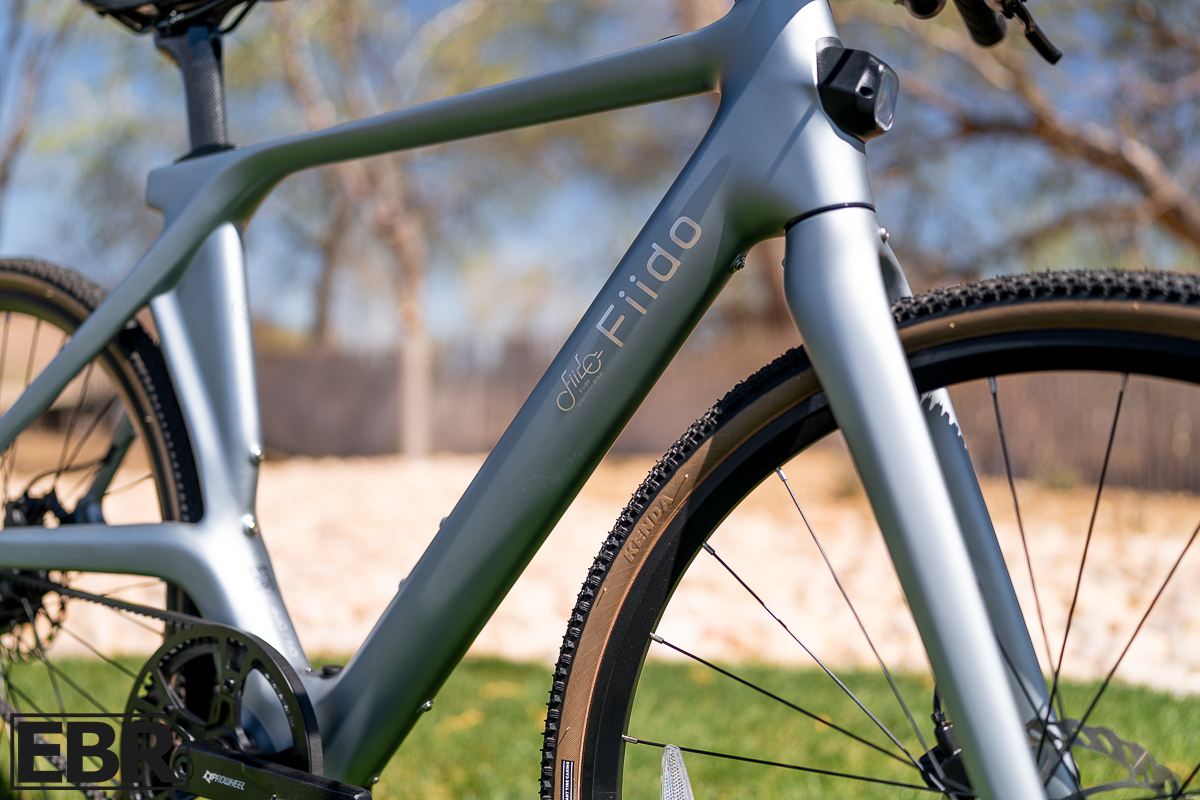
There is no getting around it: the Fiido Air is a pleasure to look at; it’s sleek with an almost futuristic look, complete with an aero carbon seat post. With cables tucked neatly through the headset, a slammed stem, and futuristic carbon fiber lines, this 30.3-pound e-bike could pass for a more high-end traditional bike. You’d need a fourth or fifth glance to clock it as electric. Fiido hasn’t reinvented the frame, but they’ve nailed a look that’s as stealthy as stylish without screaming “e-bike.”
Visually, the Air is a homerun. The sleek lines, matte silver colorway, gum wall Kenda 700x40C tires, and subtle black/carbon accents scream understated cool. Minimal branding keeps it clean, and the single-color option helps Fiido hit that $1,799 price point.
The Fiido Air’s design grabbed my attention from the first ride—not weird, just different. Most e-bikes sit you upright, prioritizing cushy, relaxed cruises. With a slammed stem and flat 640mm carbon handlebar, the Fiido Air leans you forward into a sportier, more engaged position. It’s snappy and nimble, making it a blast to weave through city streets or carve up light gravel paths over my 100 miles of testing. You feel quick (but not too quick, more on that later) and in control, with just enough stability to confidently tackle descents or mixed surfaces. It’s not a road-race beast, but it is far from a lazy commuter.
The Gates CDX belt drive, paired with a 60t chainring and 22t cog, is (as expected) silent, smooth, and nearly maintenance-free. On flats, I could pedal without motor assist and barely notice the bike’s 30.3 pounds, which is a lifesaver if you run out of juice mid-ride… ask me how I know.
The 250W MIVICE M070 rear hub motor (35 Nm torque) is another nearly silent aspect of the Air. I’ve tested MIVICE motors in other bikes, and this one’s no different—silky and subtle. But don’t expect it to conquer the steep hills of San Francisco. Anything over a 10% grade had me huffing as much as pedaling, where the single-speed setup showed its limits.
Speaking of limits, the speed capped at 15 MPH might bug some riders. For me, it’s a fair trade for a pedal-focused e-bike that feels like a fitness booster, not a moped. The lack of a throttle reinforces that pure cycling vibe, and I loved how it blended into my daily commute. The torque sensor is very nice and makes every pedal stroke feel natural.
The motor is a 250W rear hub motor made by MIVICE (Mivice M070 250W), a brand of hub motors I have quickly come to love as I’ve seen them in a few bikes from different brands, and all had the same smooth, silent character I just appreciate. The motor puts out 250W nominally, peaks at 450W and has 35 Nm of torque which based on the hill performance, checks out.
Part of the power has to do with the design of the Fiido Air, a bike that, in addition to the omitted throttle, has a speed limit capped at 15 MPH, which, depending on your riding style, could be a deal breaker or not, that’s for you to determine. For me, the pedal focused design, silent operation and 15 MPH speeds are a nice touch for a daily commuter that would only increase my fitness over time.
The clean cockpit, free of a dedicated display and cluttered cables, is a design win. Internal routing through the stem and headset keeps things tidy, and the single-speed drivetrain means fewer wires dangling from the carbon bar.
But, the Fiido Mate S3 smartwatch, meant to toggle between Normal and Sport modes, was a clunky letdown. Switching modes meant taking both hands off the bars or fumbling one-handed while squinting at a tiny screen. After a few rides, I ditched the watch and mounted my phone with the Fiido app as a makeshift display. It’s not ideal, but it worked better than wrestling with the watch mid-ride.
After 100 miles, the Fiido Air feels like a blast to ride. It’s not perfect, but zipping around town, it’s hard not to grin on a bike this light and nimble. The Fiido Air is a bike that begs (err, requires) you to keep pedaling, and for a city commuter like me, that’s what I’m here for.
Range
Estimated Range (from Fiido):
- Up to 37 miles
Real World Range Test Results:
- MIN Test (Normal Mode): 42 miles
- MAX Test (Sport mode): 25 miles
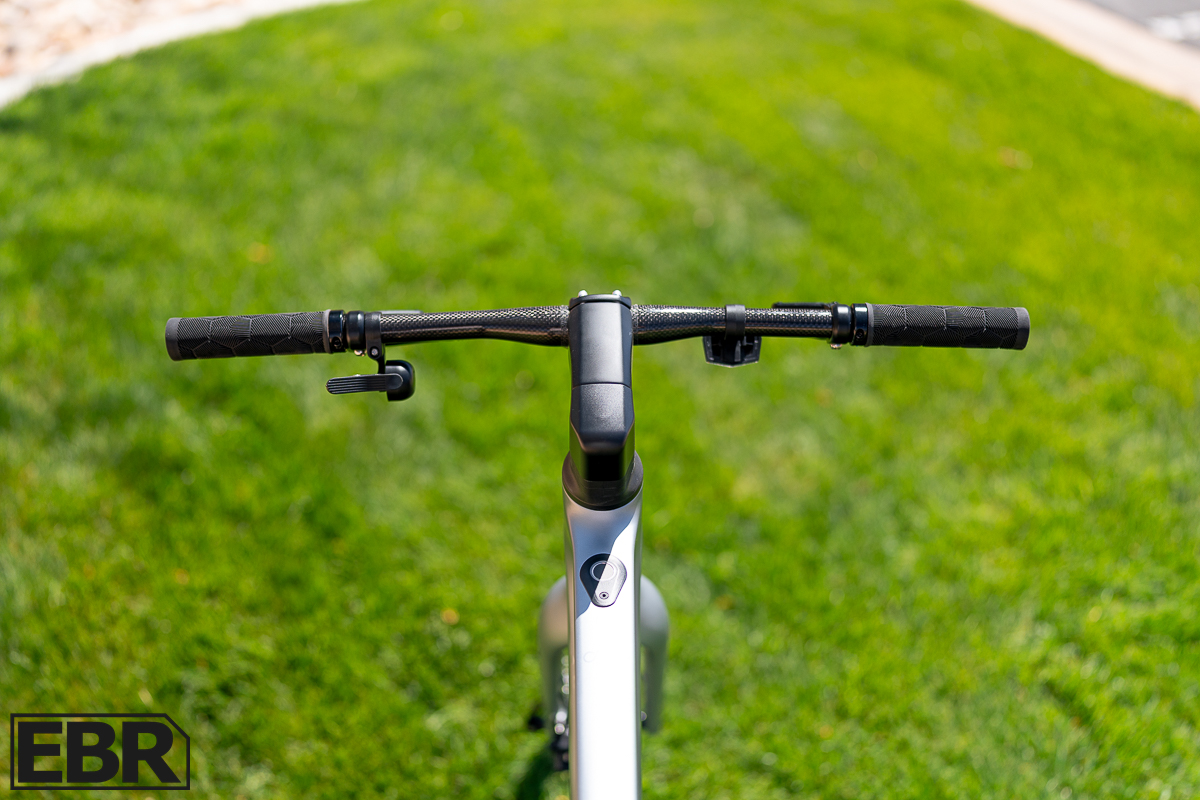
Every e-bike brand throws out a range claim backed by a slick spec sheet. For the Fiido Air, that’s a 36V, 5.8Ah battery packing 208.8 watt-hours of juice, promising up to 50 miles. Sounds nice, but specs and claims don’t dodge traffic, pedestrians, or curious dogs. Real-world rides do. Fiido says their 37-mile test came from a 176-pound rider on flat terrain in mild weather. At 180 pounds, riding flat city streets in similar conditions, my range test was about as close to their setup as it gets.
So, how’d the Air hold up?
The Air keeps things simple with two pedal-assist modes—Normal and Sport—and no throttle. On my first run, I dialed in Normal mode with minimal assist, cruising around 14 mph. The result? A solid 44 miles on a single charge, topping Fiido’s 37-mile test and getting close to their 50-mile max claim. That’s a win for long commutes or extended joyrides without sweating the battery.
While Normal mode stretched the battery like a champ, Sport mode burned through it despite barely going marginally faster. I can only infer this means ‘Sport’ mode leans harder on the 250W MIVICE motor, draining the 208.8Wh battery faster, while my pedaling in ‘Normal’ mode did more of the work, especially with the 15 mph limit holding back any real speed gains.
It’s a quirk that makes Sport mode feel like overkill for most rides—stick to Normal, and you’ll go farther for less effort. The speed gains in Sport mode don’t really add up enough to waste the juice.
For a 30.3-pound e-bike, 44 miles in real-world conditions is impressive, especially for a battery this size. However, the gap between modes shows that the Air’s range is sensitive to how you ride. If you’re commuting or cruising flats, Normal mode has you covered. Just don’t expect Sport to unlock much more than a quicker battery drain.
Power (Motor & Battery)
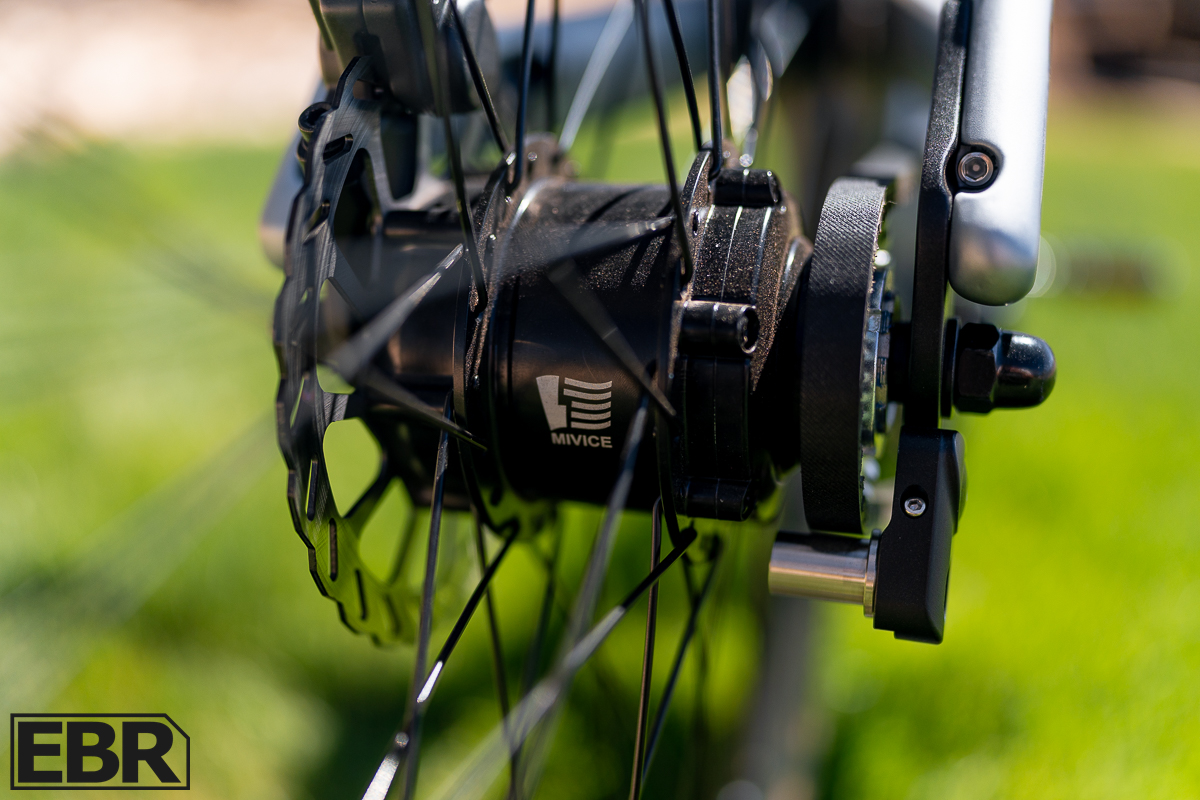
The Fiido Air’s power system is built for lightweight, pedal-driven riding, with clear strengths and limits. At its core is a 250W MIVICE M070 rear hub motor, delivering 35 Nm of torque and peaking at 450W. I’ve tested other MIVICE motors, and this one’s consistent—smooth and quiet, great for city streets. Over 100 miles, the MIVICE S200 torque sensor made pedaling feel natural, syncing with my effort on flats and gentle inclines. Cruising at 14 mph in Normal mode, the motor keeps the Air responsive without taking over.
Steep hills are a different story. On grades over 10%, the motor and single-speed Gates belt drive (60t chainring, 22t cog) had me working harder with my pedaling. It’s not underpowered for a 30.3-pound e-bike—just not made for tough climbs. The 15 mph speed cap (locked, not unlockable to 18.6 mph in my tests) fits the Air’s commuter focus. I liked how it encouraged legwork, like a fitness boost, but if you need 20 mph, you’ll be pedaling hard or shopping elsewhere, as the Fiido Air cannot be unlocked for more speed.
The 208.8Wh battery (36V, 5.8Ah) is integrated into the carbon downtube, keeping the frame clean but non-removable. That’s inconvenient if you haul the bike to an apartment or lack a nearby outlet. Charging takes 4 hours with the 2A charger—fast enough for daily use—and my 44-mile range in Normal mode showed it’s efficient for its size. Sport mode cut it to 25 miles, as the motor draws more power when pushed. For most riders on flats, the batteries have enough juice but don’t count on it for much more without the optional range extender.
The Air’s motor and battery give a smooth and quiet ride that’s not built for steep climbs or high speeds, but for riders who love to pedal, it’s a solid setup.
Components

The component lineup on the Air is just as surmised as its cockpit. With a single-speed Gates CDX Carbon Belt Drive, a 60T Chain ring, and a 22t rear cog, the simplistic approach to components kept the same theme of the bike.
The Tektro hydraulic disc brakes use 160mm rotors with a 1.8mm thickness and 2-piston calipers. This is an excellent setup for a bike of this weight and speed, and in my rides, I never felt the braking was underpowered.
The wheels are a 700c double-walled alloy wrapped in 700x40c Kenda tires with a mildly aggressive tread pattern, typical of modern gravel bikes, tread where it counts but light, quiet on the road, and fast-rolling.
The 640mm carbon handlebar is flat (no rise), and the rubber lock-on grips finish off the bar ends. The center of the bar has a 31.8mm bite, and there is a non-adjustable stem that Fiido claims is carbon as well. I think an adjustable stem might be a better choice here as it would make more riders find a comfy riding position if the lean-forward sporty ride feels a bit too sporty.
The Velo saddle is comfy and looks good sitting atop the carbon fiber aero-shaped seat post, but don’t expect a QR lever to adjust saddle height; with the Air, you will need an Allen key, and it can be adjusted by lifting the weather seal at the base of the seat post to reach the nut to loosen so you can make adjustments.
The top tube of the Air has a single fingerprint scanner touchpad so you can register multiple fingers from multiple angles, and access is quick to read the fingerprint and unlock the bike.
All in all, its component package compliments the pedal-forward focus of the Fiido Air with clean lines, a clean cockpit, and a simple setup that gets the job done.
Screen / User Interface / App
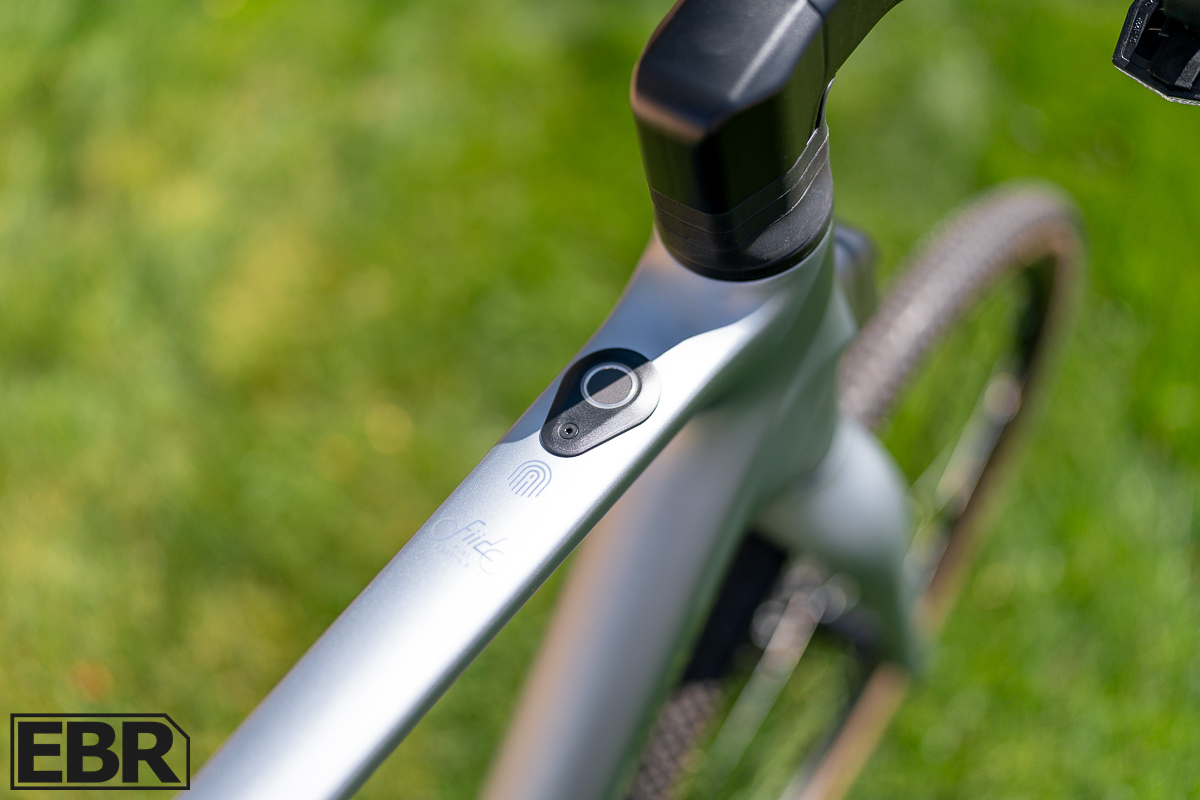
Fiido Air Model Options
The Fiido Air’s no-throttle, no-display setup is a bold move, keeping the cockpit clean and the bike looking anything but electric. Instead of a traditional screen, you get the Fiido app (available on Google Play and Apple Store) and a Fiido Mate S3 smartwatch to handle ride data and controls. It’s a futuristic pitch, but does it deliver? After 100 miles, I’ve got thoughts.
The Fiido app is decent but rough around the edges. It tracks speed, distance, and ride time and lets you switch between Normal and Sport modes right from your phone. There’s even a social hub where air riders worldwide share photos and ride stats. It’s pretty cool to see what others are doing. But the setup was a hassle. The app froze a few times, and I had to reinstall it twice to get the frame-integrated fingerprint scanner working on day one. Since then, it’s been smooth, so maybe I just hit a glitch. Still, an update wouldn’t hurt to iron out those bugs.
The Fiido Mate smartwatch included is a slick idea. It looks like an Apple Watch knockoff, pairs easily with the bike, and shows speed, distance, and mode settings at a glance. You can tap to toggle between Normal and Sport modes, which sounds handy. But the battery life? Not so much. Even fully charged, it barely lasted 6 hours—fine for short rides but a dealbreaker for all-day adventures. I also didn’t love choosing between the Fiido watch and my personal smartwatch, which syncs with my life outside biking. After a couple of days, I ditched the watch entirely. My phone, already mounted on the handlebars, runs the app just fine as a display, showing all the same data without the extra hassle.
In the end, the Air’s tech leans hard into its minimalist vibe, and I respect the vision. The app gets the job done once it’s stable, and the social feature adds a fun twist. But the smartwatch feels like a half-baked gimmick—cool in theory, clunky in practice. Stick with the phone app, and you won’t miss much.
Is The Fiido Air Worth Buying?
Getting to know the Fiido Air was a refreshing change in a world of cookie-cutter e-bikes that churn out the same heavy, bloated designs. At $1,799, it feels like foreign territory getting a 30.3-pound, full carbon fiber e-bike with a 44-mile range, a quiet Gates belt drive, and tech like a fingerprint scanner and Fiido Mate smartwatch. It’s a bike that feels like a regular ride—light, nimble, and fun—while slipping in just enough electric assist to make your commute or cruise easier.
It’s not flawless, though. The 15 mph speed cap will turn off anyone chasing speed, and the 35 Nm torque from the MIVICE motor struggles on hills steeper than 10%, leaving you to pick up the slack. The Fiido app’s freezes forced me to reinstall it twice during setup, though it worked fine after that, and the smartwatch’s short battery life pushed me to use a phone mount instead. Still, none of these quirks ruined the ride—I had a genuinely good time pedaling the Air, rediscovering the simple joy of biking with a modern twist.
This e-bike is for cyclists who’ve eyed electric rides but can’t stomach the 70-pound fat-tire beasts dominating the market. If you’re a commuter, a style-conscious rider, or just want a light e-bike that fits apartment life and standard racks, the Fiido Air is a solid pick. It’s not for hill climbers, speed demons, or tech-averse folks.
The bottom line is that if you’re looking for a bike that’s as fun as it is practical, the Fiido Air delivers. It’s a bold step toward what e-bikes could be, and I’ll admit, even with its shortcomings, it won me over.
Pros
- With a price of $1,799, the Air’s carbon fiber frame, fork, handlebar, and seat post, at just a claimed 30.3 lbs, feels like a value not seen often, especially in 2025.
- A frame-integrated fingerprint scanner is a new security feature I haven’t seen on an e-bike yet, but it’s quick, easy, and provides a solid layer of security.
- Sleek Lines make for a great-looking e-bike that doesn’t scream ‘e-bike’.
- I was able to cover the 44-mile range from the 250W motor and 208Wh battery, showing how efficient the Air can be.
- The Gates Carbon Belt drive and MIVICE motor is a stealthy duo that gives the Air a smooth, silent ride.
- The Tektro hydraulic disc brakes and 160mm rotors are a perfect combo to give strong and precise braking on a bike this light.
Cons
- Speed is capped at 15 MPH, and you can’t ‘unlock’ it, and for some, this will be a deal-breaker.
- While it has one of the cleanest cockpits on e-bikes yet, the lack of a display means relying on the included Fiido Mate Smartwatch or using the Fiido App to keep track of your bike’s status on the go.


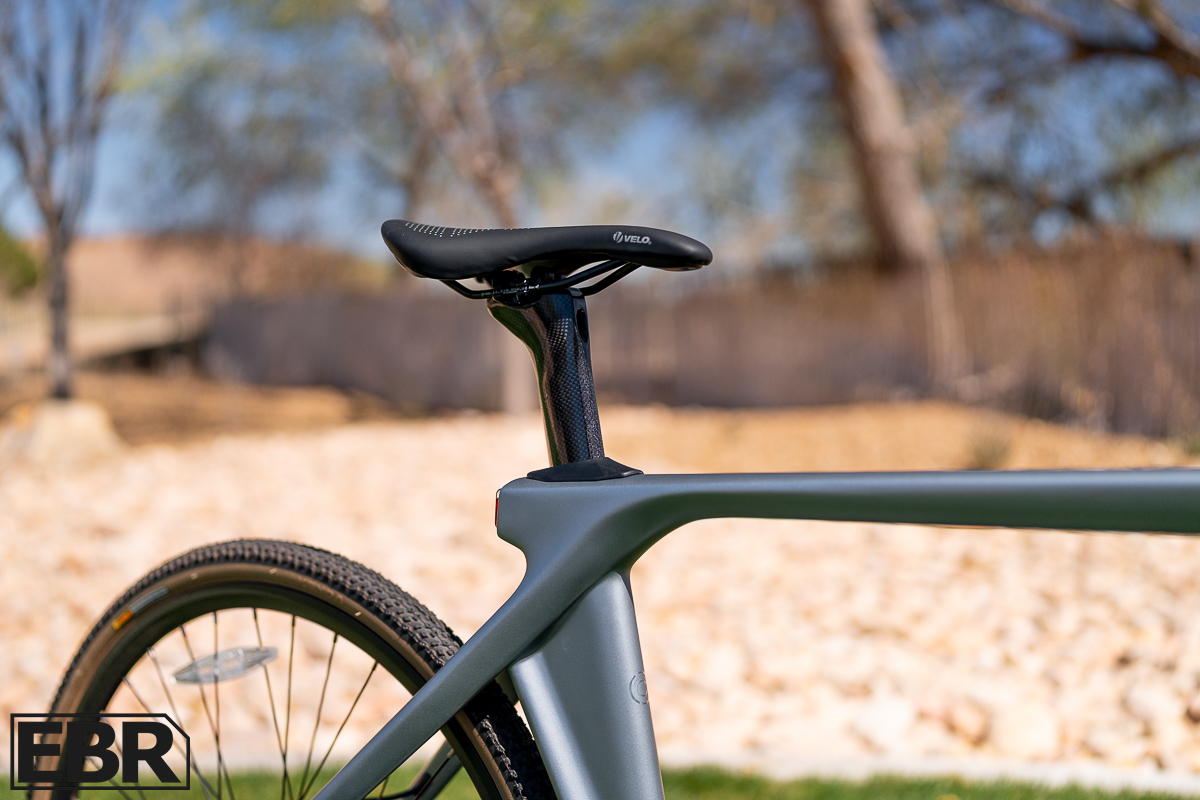
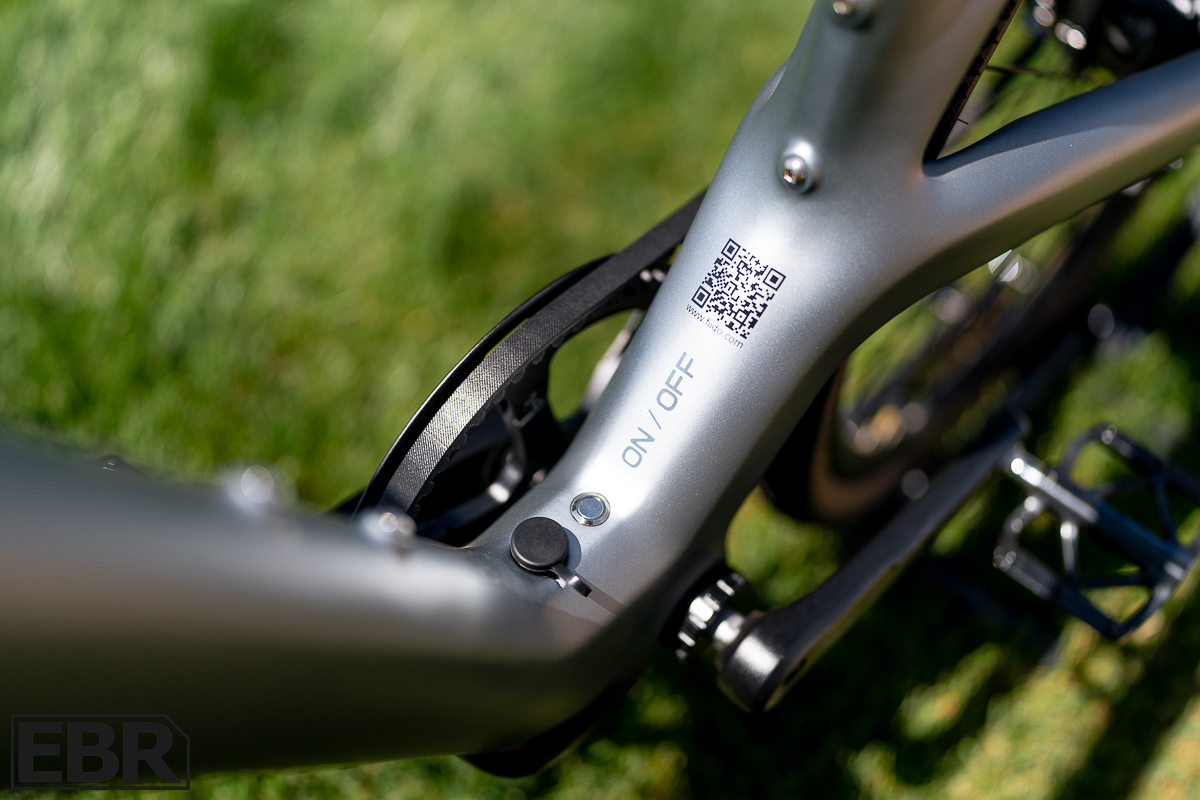
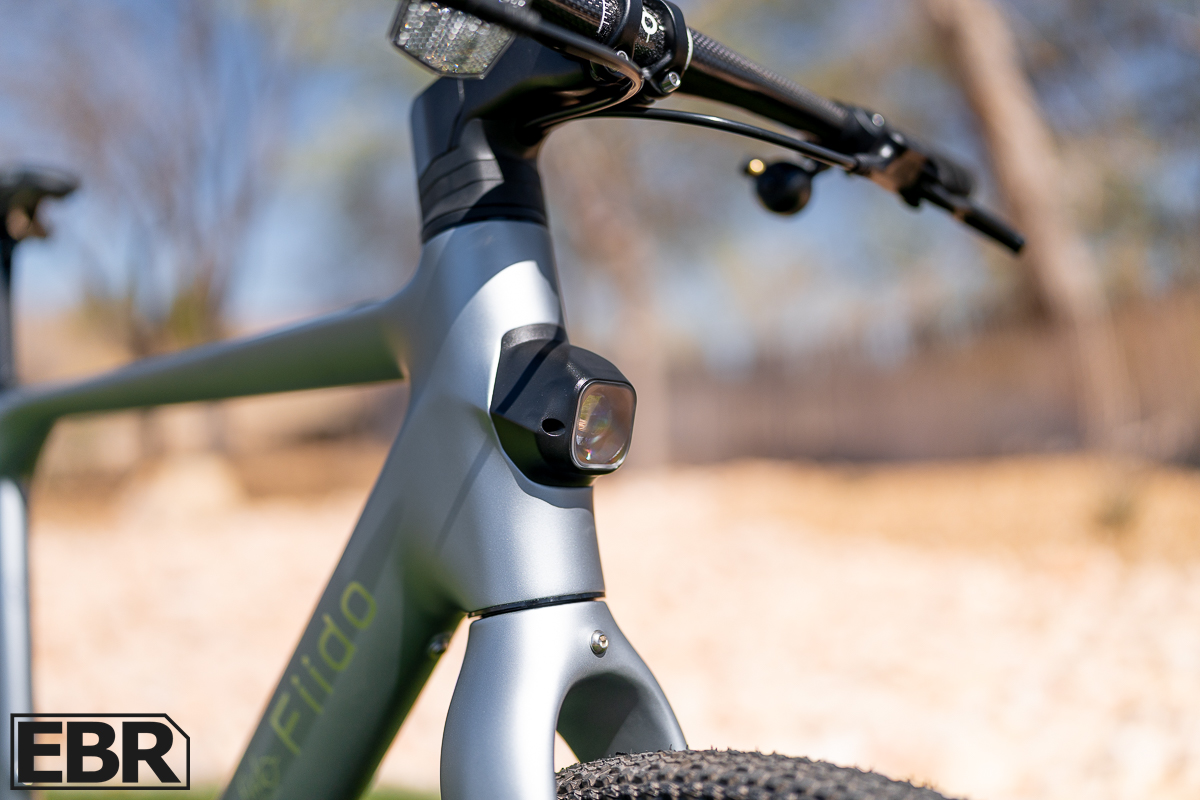

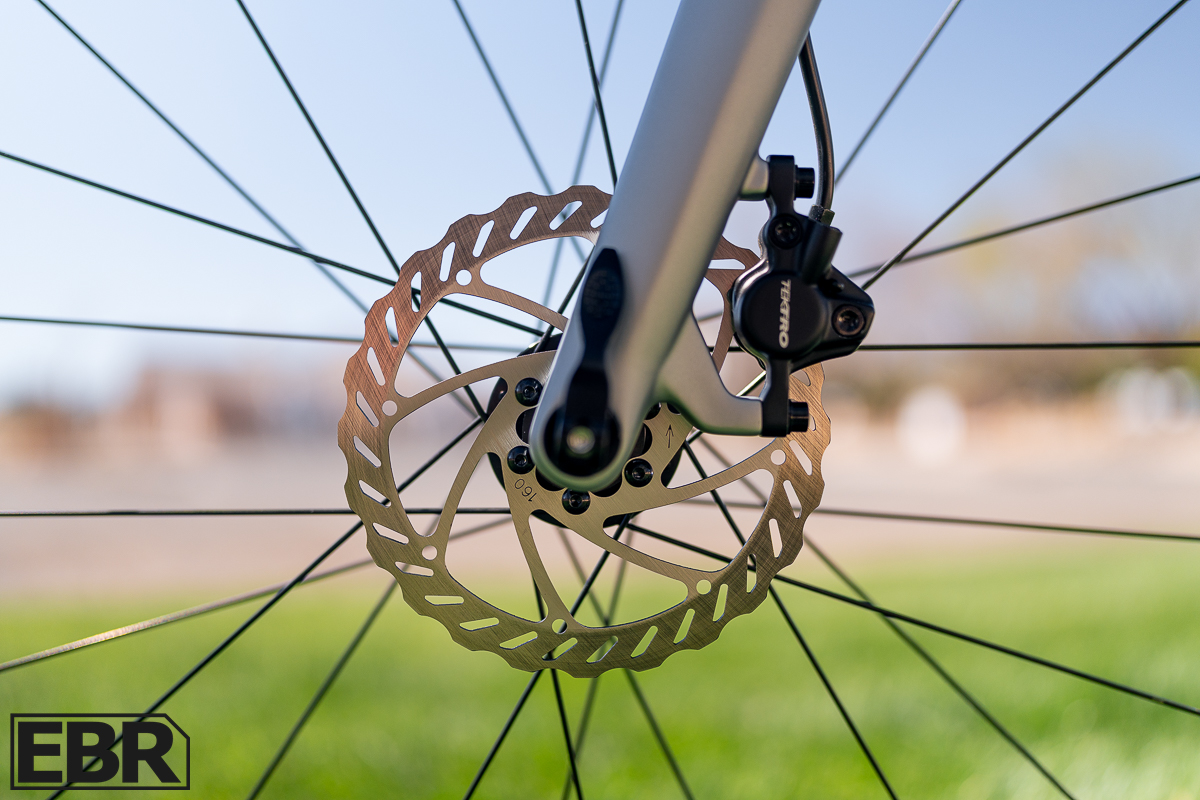


Reader Interactions